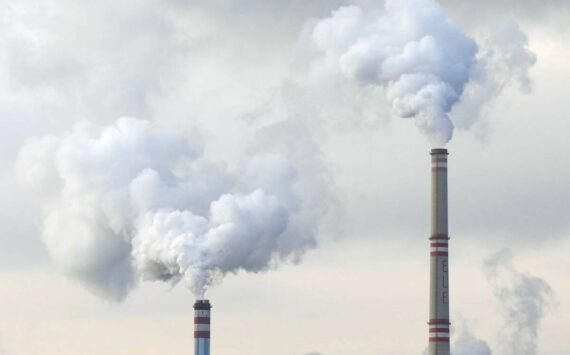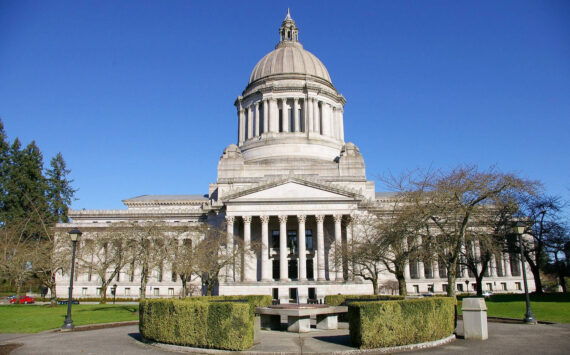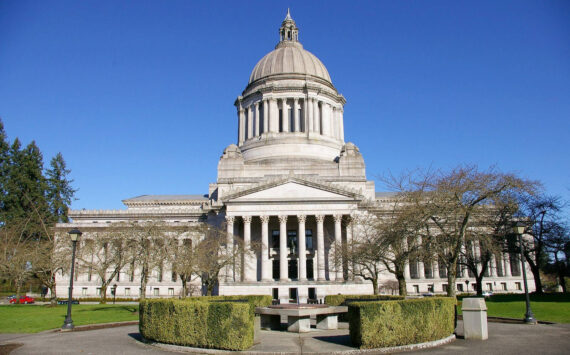Washington state has a wildfire crisis. In 2018, the Washington State Department of Natural Resources – the state’s largest wildfire fighting force – responded to more than 1,850 wildfires, a record high. Across Washington, 440,000 acres burned.
The costs to fight wildfires in this state each year are immense – averaging $153 million. And a changing climate and more development in the wildland-urban interface mean the threat of wildfire will increase.
More than 2.2 million homes in Washington now lie in the potential wake of wildfire, according to a recent U.S. Forest Service study that analyzed population centers against areas where wildfires are highly likely.
To help Washington prepare and manage this escalating risk, Commissioner of Public Lands Hilary Franz today released Washington’s Wildland Fire Protection 10-Year Strategic Plan.
“Wildfire fire is not an eastside or westside problem. It is not an urban or rural problem. Wildfire is a problem for all of Washington,” said Public Lands Commissioner Hilary Franz. “That is why we developed an ‘all lands, all hands’ approach, one that calls for urgent, transformative change in how our state confronts wildfire.
“If our firefighters can come together from different walks of life and unite for the common good of Washington, surely we can do the same and give them the support and training they need.”
The Strategic Plan, developed by DNR, reflects the input of nearly 1,000 Washingtonians, including experts from the U.S. Forest Service, Washington State Fire Marshal’s Office, and local fire agencies. The plan applies to all wildfire response agencies, as well as local emergency responders, forest health experts, and community members.
“We can’t stop fires from occurring, but we can stop doing the same things we’ve always done in dealing with them, said Chief Dave LaFave of Cowlitz 2 Fire & Rescue and the Washington Fire Chiefs Association. “The Wildland Fire Protection Strategy truly is a blueprint for success to create positive change in our forests and wildland urban-interface. This strategy gives us a balance and chance to make a difference.”
The plan lays out 40 strategies to accomplish four key goals:
Washington’s preparedness, response, and recovery systems are fully capable, integrated, and sustainable,
Landscapes are resilient – in the face of wildland fire, they resist damage and recover quickly.
Communities are prepared and adapted for current and future wildland fire regimes, and
Response is safe and effective.
High-priority strategies – strategies for 2019 and 2020 – include:
Suppression
Add 30 full-time DNR firefighters
Add 40 seasonal DNR firefighters
Establish an interagency wildland fire training academy
Increase aerial response capacity
Convene a task force to develop a sustainable wildland fire funding mechanism
Preparedness
Accelerate DNR’s 20-Year Forest Health Strategic Plan
Revise regulations to allow for more prescribed fire
Expand landowner assistance programs
Create a Fire Risk Management & Mitigation program at DNR
Develop a quantitative risk assessment to conduct planning and prioritize resources
Prevention
Expand existing wildfire prevention outreach efforts
Develop and deploy new community engagement methods, including social marketing
More capacity to engage limited English proficiency communities


DNR put forward a $55 million request to the state legislature this session to increase investments in wildfire response capacity and forest health. That request mirrors plan strategies.
Yet, the strategies of the plan are bigger than any one budget request. That is why DNR will convene an interagency forum to guide plan implementation, set priorities, and coordinate actions over the next 10 years.
Wildfire and Strategic Plan Facts:
According to the 2018 U.S. Forest Service Study (“Pacific Northwest Region Quantitative Wildfire Risk Assessment”), which looked at the likelihood of a wildfire burning at a given location and the potential intensity of a wildfire if one were to occur, 2.2 million homes are in the potential wake of a wildfire. Researchers simulated wildfires across the state and used those models to identify homes within burn areas.
Washington state has over 4,536 square miles of wildland-urban interface, containing more than 950,000 homes. See page 34 of the plan for a ranking of highest-risk communities.
According to the Northwest Coordination Center, the annual cost to suppress large wildfires (more than 100 acres of forestland or 300 acres of grassland) in Washington state has quadrupled from $37 million in 2008-2012, to $153 million in 2013-2018.
Suppression costs make up just an estimated 9 percent of the total costs of wildfires once lost business, infrastructure, habitat, timber, grazing, and agriculture resources, disaster recovery, and health impacts are considered. (Source: Headwaters Economics, 2018a. Economic Prole System Report: Land Use and Wildland Urban Interface.)
The strategies developed for this plan align with DNR’s 20-Year Forest Health Strategic Plan: Eastern Washington, completed in 2017.
Lands Commissioner Franz oversees the Department of Natural Resources and its responsibility to prevent and fight wildfires on 13 million acres of private, state, and tribal-owned forestlands. This includes supervising the state’s largest wildfire department.
– DNR







